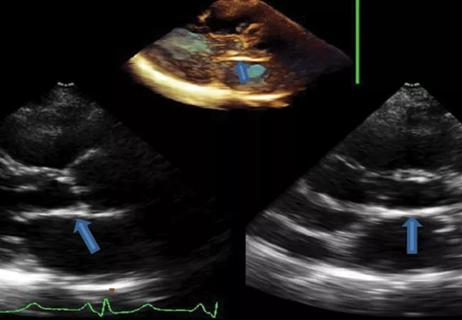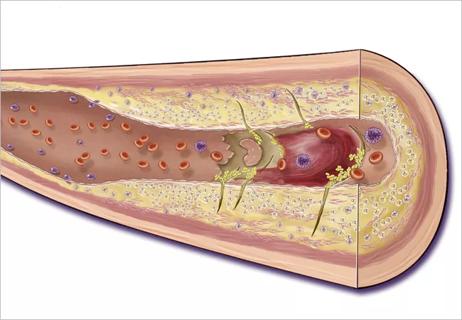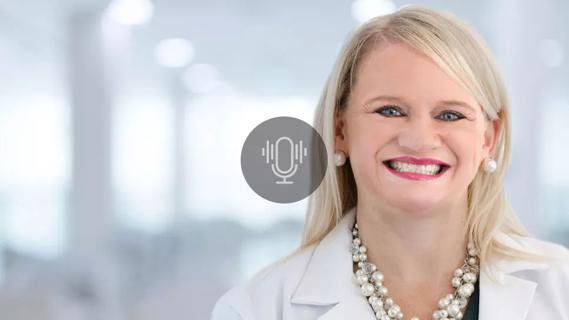Pediatric specialists unpack new evidence, considerations for care and what’s ahead

Pediatric specialists in oncology and cardiology continue to learn more about the cardiotoxic effects of lifesaving cancer treatments. The intersection of these disciplines is a growing field known as cardio-oncology, which first emerged nearly two decades ago.
Advertisement
Cleveland Clinic is a non-profit academic medical center. Advertising on our site helps support our mission. We do not endorse non-Cleveland Clinic products or services. Policy
Efforts to develop personalized surveillance, safely reduce cardiotoxic dosing, and implement lifestyle interventions and other cardioprotective strategies are underway. The American Heart Association recently published a scientific statement in Circulation that reflects new evidence, considerations for care and future directions.
Consult QD had the opportunity to sit down with Cleveland Clinic Children’s heart failure specialist Shahnawaz Amdani, MD, Director of the Pediatric Cardio-oncology Clinic, and oncologist Seth Rotz, MD, Director of the Childhood Cancer Survivorship program, to discuss high-level takeaways from the report and also the discipline at large.
Dr. Rotz: Over the past two decades, we've learned about the cardiotoxic potential of chemotherapy and are now thinking about it as a long-term issue. This recognition has led to changes in practice across the board. Most notably, this includes the use of a drug called dexrazoxane, which has cardioprotective properties and can be effective when used in combination with anthracyclines, a class of drugs known for their high cardiotoxicity.
Additionally, clinical trials are investigating how anthracyclines and radiation might be safely reduced.
Between changes in treatment approaches and active research, clinicians’ antennas are up, and we are seeing more aggressive approaches to surveillance for this population than ever.
Dr. Amdani: Cardio-oncology has evolved from being a reactive field focused on managing late cardiac complications to a proactive discipline, emphasizing early detection, prevention and longitudinal care. We now understand that nearly every class of cancer therapy, chemotherapy-targeted agents, immunotherapy and radiotherapy can affect the heart.
Advertisement
In pediatrics, the field is maturing to integrate precision surveillance risk-based therapy and a seamless transition to adult care. In building the Pediatric Cardio-oncology program at Cleveland Clinic Children's, I was inspired by the recognition that the success of oncologic therapies must be matched by an equally robust commitment to preserving long-term cardiac health.
Dr. Amdani: The statement deepens our understanding of anthracycline-induced remodeling phenotypes and inter-individual variability in susceptibility, including genetic predisposition. This highlights, in my opinion, the need for nuanced, individualized cardiac surveillance strategies. You can't have a one-size-fits-all approach.
The second aspect is the consideration of novel agents. Newer therapies, such as tyrosine kinase inhibitors (TKIs), immune checkpoint inhibitors and CAR-T cells bring unique cardiotoxic profiles, ranging from arrhythmias to myocarditis. This underscores the need for cardio-oncology expertise, even outside of traditional anthracycline-based regimens.
Dr. Rotz: What we know now about anthracyclines is from following patients treated in the 70s, 80s and 90s. As Dr. Amdani notes, TKIs represent a new set of cancer therapies, and patients may be on them for many years, even their entire lives. We are only starting to understand their potential long-term cardiac effects. The authors underscore that point, noting that we need to identify best practices for monitoring cardiac dysfunction.
Dr. Amdani: The authors highlight inconsistent transition practices and emphasize the need for structured multidisciplinary models that ensure continuity of surveillance into adulthood. This is particularly important in my practice, where patients may not manifest cardiac complications until decades later. This transition can be strengthened by collaboration and dedicated specialty clinics, which we are very proud to provide for our patients here at Cleveland Clinic.
Advertisement
Dr. Amdani: This statement affirms that traditional risk factors like obesity, hypertension, and inactivity compound the long-term cardiotoxic burden. As clinicians, we must empower survivors with tools, like exercise and cardiac rehabilitation as needed, to modify what can be changed, even if past cardiac injury cannot be undone.
Despite some pediatric-specific data, significant gaps remain in the literature regarding the use of heart failure therapies. As a heart failure clinician, this compels me to practice with judicious extrapolation and careful monitoring.
Dr. Amdani: The integration of early individualized surveillance strategies and lifelong cardiovascular risk mitigation.
As shown in this report and based on my own clinical experience, the timely initiation of cardioprotective therapies can dramatically improve outcomes and, in some cases, reverse dysfunction in acute settings. However, questions like What constitutes subclinical cardiotoxicity in pediatrics? And How do you respond to that? These are important. The global longitudinal strain is a powerful early marker; however, the lack of pediatric-specific thresholds and intervention trials limits definitive action.
Dr. Rotz: From a research perspective, we need to continue investigating how cardiotoxic doses can be safely reduced and add to our understanding of the long-term effects of targeted therapies and immunotherapies.
We also need to consider the delivery of care and implementation of screening for these patients. Yes, we have guidelines from long-term survivors who received cardiotoxic medications. Still, if patients aren't being seen in a survivorship clinic or their primary care provider is not aware of these guidelines, then they aren't being screened. This is a critical open area.
Advertisement
Dr. Amdani: The first is understanding genotype-driven risk stratification. By identifying patients with polymorphisms that increase cardiotoxic risk, we could practice precision prevention, much like pharmacogenomics and oncology.
The second is the development of pediatric-specific trials for heart failure therapies. There is an urgent need for mechanistic and interventional trials that evaluate traditional heart failure drugs, such as ACE inhibitors, beta-blockers, and angiotensin receptor-neprilysin inhibitors, in pediatric cardio-oncology populations.
The third aspect is establishing standardized models that bridge pediatric and adult cardio-oncology care, helping to sustain cardiac surveillance during the transition to adulthood.
And finally, a focus on integrating supervised exercise and lifestyle interventions. Data increasingly support the use of tailored exercise programs to preserve cardiopulmonary fitness and metabolic health, but access to these programs remains limited.
Advertisement
Advertisement

27th offering of this CME favorite to be held March 6-9 in Hollywood, Florida

Metabolites from animal product substrates implicated in heart failure development in community cohorts

ACC committee underscores need to properly weigh benefits in risk-benefit calculations

Weakened endorsements in settings of normal EF and mild-moderate LV dysfunction may cause harm

Key themes and insights into the family-caregiver experience

AHA recommendations for pretransplant evaluation, peritransplant and long-term management

Nurses find unique challenges, profound rewards when managing children with cancer

First-of-its-kind clinic for immune-related adverse events supports oncologists in managing severe side effects